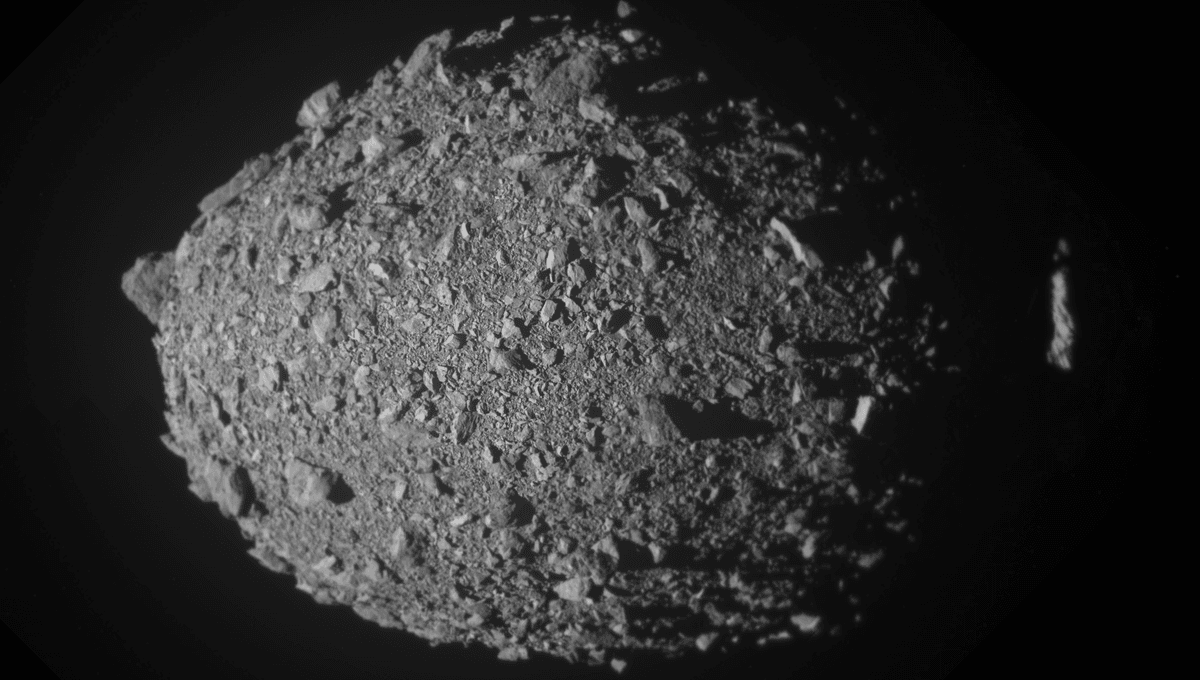
Almost a year ago, NASA’s DART mission slammed into asteroid Dimorphos, the moon of the larger asteroid Didymos. The goal was to move the asteroid to a different orbit, and the shift was successful – the asteroid shifted way more than expected. New research suggests that, inexplicably, the orbit continued to change for a month after the impact.
DART is a planetary defense system known as a kinetic impactor. This approach is designed to ram into a celestial body at high speed; the exchange of momentum alters the orbit of the asteroid. If the asteroid was on a collision course with Earth, this could shift the object on a safer route. The change is usually small, but with enough time, it can be sufficient to be safe.
Dimorphos was not a danger to us. It was chosen because astronomers knew how long it took to go around Didymos. DART demonstrated that impacting can change the speed of an asteroid and, in fact, Dimorphos moved onto a smaller orbit. The goal was to shorten its period by seven minutes, but the impact actually shortened it by 33 minutes, at least at first. Somehow, the asteroid kept losing momentum over time.
A group of high school students from The Thacher School conducted observations of the asteroid before the impact until November 6, 2022. Using the 0.7-meter telescope in the school’s observatory, they measured the period of Dimorphos and discovered that it continued to increase over the days after the impact, becoming higher than the official measurement from right after the collision.
“The number we got was slightly larger, a change of 34 minutes,” Dr Jonathan Swift, teacher and director of the observatory told New Scientist. “That was inconsistent at an uncomfortable level.”
The behavior was not expected, but to be perfectly honest this is the first time that humanity literally moved a celestial body. The impact is believed to have created a crater tens of meters in diameter, huge for a body just 160 meters (525 feet) across.
The impact has thrown a lot of material, including many boulders, into orbit. It is possible that some of that stuff came back to Dimorphos, slowing it down more. The system is a complex one. It is now like two billiard balls colliding against one another.
“If you hit a rubble pile with a spacecraft, a lot of material will be ejected and fly away from the object. We see this in our early post-impact images. That ejected material carries momentum. The period change that we observe is not just the result of the momentum transfer from the impacting spacecraft, but also due to that extra momentum boost from the motion of the ejected material,” Dr Cristina Thomas, from Northern Arizona University, told IFLScience in a previous interview.
The European Space Agency’s Hera mission will get to the asteroids in late 2026 and will provide more insights into the collision and its consequences. So far, it seems that the orbit has stabilized.
The budding researchers presented their work at the American Astronomical Society in Albuquerque in June and in a paper accepted for publication in Research Notes of the American Astronomical Society.
[h/t: New Scientist]
Source Link: High School Students Discover Weird Behavior Of Asteroid Hit By NASA Spacecraft